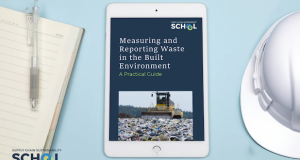New technical guidance designed to help contractors make more informed decisions when selecting suspension systems for building services has been published by the Building Engineering Services Association (BESA).
The latest in the Association’s series of technical bulletins, TB58 Alternative Systems for Building Services Supports outlines the potential benefits of switching from traditional supports and fixings to more modern approaches that can make installations safer and more sustainable.
TB58 provides a concise and practical overview of the various alternative solutions available and is designed to be used in conjunction with more detailed publications including BESA’s Guide to Good Practice for Supports and Fixings (TR50) and the British Standards: BS 8539 Code of Practice for the selection and installation of post-installed anchors in concrete and masonry, and BS EN 1363 Fire resistance tests – general requirements.
It explains how alternative systems often provide a quicker and lighter alternative to traditional threaded rod and channel support. For example, wire and track-based supports come as complete kits designed for specific applications meaning there is less cutting and assembling required on site. This can considerably reduce installation time and is often more sustainable as they reduce the embodied carbon emissions of the complete installation.
TB58 outlines the main considerations when selecting an alternative support system including the need to ensure that the components have been tested together. Combining products from different manufacturers/suppliers should be avoided unless there is evidence they have been tested together as a complete system, it explains.
The guidance covers the steps needed to assess the right support for the type of services being installed and the importance of carefully considering the overall weight of the application when selecting bracket sizes and orientation – including assessing load limitations and safety factors.
Other considerations include the layout and orientation of services (e.g. single or multi-tiered) and any potential linear or lateral movement of services due to thermal expansion of pipework or pressure changes.
Fire safety is also heavily emphasised in the guidance along with the possible impact of corrosion.
BESA Technical Director, Graeme Fox commented: “The whole subject of fixings and support tends to stay under the radar and, therefore, often gets less consideration than it should, yet it is fundamental to the success of almost every installation.
“And because it tends to be something of an afterthought most contractors just stick with what they are used to. However, there is so much more choice available now that can make a huge difference to the ease, cost, robustness, and sustainability of every project. That is why BESA’s technical committee thought it was important to update our guidance and thinking on this crucial issue.”
Over the past year, Eptura has used proprietary data and commissioned research to explore how business leaders can balance opposing demands.
In this final summary report on the state of the workplace in 2023, the global worktech leader looks at the key insights that will shape the world of work in 2024 and beyond.
For the Q4 edition of the 2023 Workplace Index, Eptura updated its proprietary data across four demands:
- Freedom and Connection
- Value creation and Cost Control
- Flexibility and Certainty
- CO2 Targets and Costs
To download the report click here.





